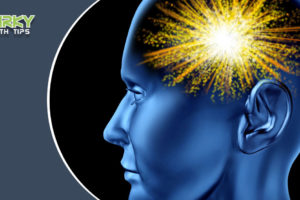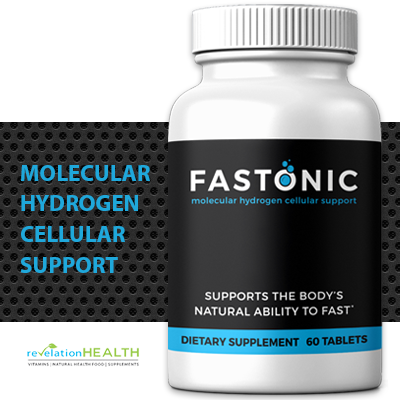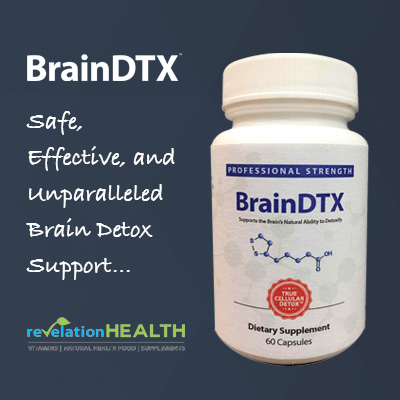Cordyceps for Health: You gotta love the natural medicine, Cordyceps. It’s not quite an herb, but its fruiting body is a mushroom.

Cordyceps for Health: Creepy Crawly Natural Medicine
Fungus Among Us.
It seems that a very hungry caterpillar (Hepialus armoricanus, or other insects such as an ant) encounters one of many species of “club head” fungi that takes over, grows, and slowly kills its host. Then the insect carcass serves as a nutrient base.
Zombie Ants.
In the case of an ant, the fungus takes control of both the brain and body. It makes the ant climb to the top of a plant and clamps its mandibles, like handcuffs, to a leaf or stim, so it eventually dies. The cordyceps fruiting body erupts from the ant’s brain. From the height advantage, the fungus releases spores on the wind.
Not a far cry from the theme of many sci-fi movies where an alien life form takes over someone’s body. Or murder mysteries, where the inconvenient corpse gets planted in the rose garden propagating botanical society awards.
The fungus grows a stem—a tube-like mycelium called fruiting body—from the insect’s body, continues to grow, and convert the insect into an orangish tube-like mycelium. Now, of course, it’s time to pick it like a mushroom and eat it.
Bon Appétit.
If eating decomposed caterpillar-fungus mycelia and carcass is gross to you, you might ask yourself if modern Medicine’s horse-urine estrogen, chicken-embryo vaccines, or freezing a placenta for later culinary enjoyment is more to your palate’s liking. Must admit, biology is fascinating. So is gastronomy.
The cordyceps fungus is proprietary to insects. To human beings, its polysaccharides, and nutrients are functional medicine.
On the Tibetan and Chinese high mountain glades, this Great Cycle Of Life—caterpillar-parasitic fungus-marvelous medicine–has thrived for millennia and supported many aspects of human health. Historically, it was exclusively reserved for royalty.
Today, because of the massive demand, rather than being wildcrafted to extinction, Cordyceps is farmed in warehouses where they inoculate caterpillars with the fungus. Then, well, Nature takes its beautifully gruesome course.
Cordyceps for Health: Massive Benefits.
What’s so special about this tasty fungus nourished by a caterpillar carcass? Let’s see what science has to say. Cordyceps:
- Improves respiratory health and oxygenation uptake. Important for weekend warriors, asthmatics, and people who breathe.
- It helps prevent certain forms of cancer, demonstrates tumor reduction, and apoptosis (cell death) of rogue cells. Studies show efficacious applications for cancers involving the lungs, colon, and rectum.
- Slows aging processes via powerful antioxidants and epigenetic impact.
- It increases energy, often dramatically.
- Improves the immune system (immunomodulating impact), and helps with leukoplakia (low WBC count). Improves natural killer cells’ activities.
- Serves as Nature’s brilliant source of biochemical compounds that modern medicine tries (unsuccessfully so far) to mimic.
- Protects heart health via anti-inflammatory and anti-muscle spasm properties.
- Supports balanced cholesterol functions lowering excessive LDL and raising HDL.
- Improves skin health with demonstrable impact on wrinkles and age spots.
- It improves low libido, especially in men. Sexual vitality is a primary, historical use for cordyceps. Supports and protects the kidneys to detoxify the blood.
- Help keep the blood viscosity from being too thick and clotted.
- It helps lower excessive blood sugar.
- It improves the gut immune processes.
- Supports and protects the liver.
Holy Caterpillar! A powerhouse of benefits.
Cordyceps for Health: Proven Superstardom.
For thousands of years, Cordyceps is a highly valued, natural medicine in the Tibetan and Chinese traditions—a true superstar. Meanwhile, modern science supports the ancient text’s information and evidence-based applications with hundreds of research studies.
Scientific studies reveal that cordyceps has many bioactive compounds—fatty acids, polysaccharides, polyamines, beta-glucans, sterols, nucleosides (cordycepin), adenosine analogs, and innate vitamins, that are responsible for the wide variety of health enhancements.
Traditional Chinese Medicine herbalists point out that cordyceps-nutrients have bioenergetic properties that epigenetically impart energy and feelings of whole-body wellbeing.
Cordyceps is safe (if you’re a human and not a bug), effective, and a promising therapy or adjunctive therapy as a functional food for health and longevity.
In the grand cycle of life, cordyceps fungus helps maintain the balance of Nature by limiting insect overgrowth. For people, cordyceps provides concentrated, cellular health-supportive nutrients and functional medicines for health and happiness.
—–
Citations
Xu YF, Effect of Polysaccharide from Cordyceps militaris (Ascomycetes) on Physical Fatigue Induced by Forced Swimming. Int J Med Mushrooms. 2016;18(12):1083-1092. doi: 10.1615/IntJMedMushrooms.v18.i12.30.
Vasiljevic JD, Zivkovic LP, Cabarkapa AM, Bajic VP, Djelic NJ, Spremo-Potparevic BM. Cordyceps Sinensis: Genotoxic Potential in Human Peripheral Blood Cells and Antigenotoxic Properties Against Hydrogen Peroxide by Comet Assay. Altern Ther Health Med. 2016 Jun;22 Suppl 2:24-31.
Xiao JH, Xiao DM, Chen DX, Xiao Y, Liang ZQ, Zhong JJ.Polysaccharides from the Medicinal Mushroom Cordyceps taii Show Antioxidant and Immunoenhancing Activities in a D-Galactose-Induced Aging Mouse Model. Evid Based Complement Alternat Med. 2012;2012:273435. doi: 10.1155/2012/273435. Epub 2012 Mar 29.
Bizarro A, Ferreira IC, Soković M, van Griensven LJ, Sousa D, Vasconcelos MH, Lima RT, Link Fruiting Body Reduces the Growth of a Non-Small Cell Lung Cancer Cell Line by Increasing Cellular Levels of p53 and p21. Cordyceps militaris (L.) Molecules. 2015 Jul 31;20(8):13927-40. doi: 10.3390/molecules200813927.PMID: 26263965, PMCID:PMC6332316, doi.org/10.3390/molecules200813927
Liu WC, Chuang WL, Tsai ML, Hong JH, McBride WH, Chiang CS. Cordyceps Sinensis health supplement enhances recovery from taxol-induced leukopenia. Exp Biol Med (Maywood). 2008;233(4):447–455. doi:10.3181/0708-RM-230
Lee HH, Lee S, Lee K, Shin YS, Kang H, Cho H Anti-cancer effect of Cordyceps militaris in human colorectal carcinoma RKO cells via cell cycle arrest and mitochondrial apoptosis. Daru. 2015 Jul 4;23:35. doi: 10.1186/s40199-015-0117-6
Nakamura K, Yamaguchi Y, Kagota S, Kwon YM, Shinozuka K, Kunitomo M. Inhibitory effect of Cordyceps Sinensis on spontaneous liver metastasis of Lewis lung carcinoma and B16 melanoma cells in syngeneic mice. Jpn J Pharmacol. 1999 Mar;79(3):335-41. PMID: 10230862 DOI: 10.1254/jjp.79.335
Yu SH, Chen SY, Li WS, et al. Hypoglycemic Activity through a Novel Combination of Fruiting Body and Mycelia of Cordyceps militaris in High-Fat Diet-Induced Type 2 Diabetes Mellitus Mice [published correction appears in J Diabetes Res. 2017;2017:7947401]. J Diabetes Res. 2015;2015:723190. doi:10.1155/2015/723190
Chungang Liu, Jingjing Song, Meiyu Teng, et al., “Antidiabetic and Antinephritic Activities of Aqueous Extract of Cordyceps militaris Fruit Body in Diet-Streptozotocin-Induced Diabetic Sprague Dawley Rats,” Oxidative Medicine and Cellular Longevity, vol. 2016, Article ID 9685257, 11 pages, 2016. doi.org/10.1155/2016/9685257.
Koh J. H, Yu K. W, Suh H. J, Choi Y. M, Ahn T. S. Activation of macrophages and the intestinal immune system by an orally administered decoction from cultured mycelia of Cordyceps Sinensis. Biosci Biotechnol Biochem. 2002;66:407–11.
Dong C. H, Yao Y. J. In vitro evaluation of antioxidant activities of aqueous extracts from natural and cultured mycelia of Cordyceps Sinensis. LWT-Food Sci Technol. 2008;41:669–77.
Park S. E, Yoo H. S, Jin C. Y, et al., editors. Induction of apoptosis and inhibition of telomerase activity in human lung carcinoma cells by the water extract of Cordyceps militaris. Food Chem Toxicol. 2009;47(7):1667–75.
Choi S. B, Park C. H, Choi M. K, Jun D. W, Park S. Improvement of insulin resistance and insulin secretion by water extracts of Cordyceps militaris, Phellinus linteus, and Paecilomyces tenuipes in 90% pancreatectomized rats. Biosci Biotechnol Biochem. 2004;68:2257–64.
Chiou W. F, Chang P. C, Chou C. J, Chen C. F. Protein constituent contributes to the hypotensive and vasorelaxant activities of Cordyceps Sinensis. Life Sci. 2000;66:1369–76.
Drewes S. E, George J, Khan F. Recent findings on natural products with erectile-dysfunction activity. Phytochemical. 2003l62:1019-25
Colson S. N, Wyatt F. B, Johnston D. L, Autrey L. D, FitzGerald Y. L, Earnest C. P. Cordyceps Sinensis- and Rhodiola Rosea-based supplementation in male cyclists and its effect on muscle tissue oxygen saturation. J Strength Cond Res. 2005;19:358–63
Ng T. B, Wang H. X. Pharmacological actions of Cordyceps, a prized folk medicine. J Pharm Pharmacol. 2005;57:1509–19.
Wu Z. L, Wang X. X, Cheng W. Y. Inhibitory effect of Cordyceps Sinensis and Cordyceps militaris on human glomerular mesangial cell proliferation induced by native LDL. Cell Biochem Funct. 2000;18:93–7.
Feng K, Yang Y. Q, Li S. P. Renggongchongcao. In: Li S. P, Wang Y. T, editors. Pharmacological Activity-Based Quality Control of Chinese Herbs. New York: Nova Science Publisher, Inc.; 2008. pp. 155–78.
Zhu J. L, Liu C. Modulating effects of extractum semen Persicae and cultivated Cordyceps hyphae on immuno-dysfunction of inpatients with posthepatitic cirrhosis. Zhongguo Zhong Xi Yi Jie He Za Zhi. 12(195):207–9.
Wang X. B, Liu P, Tang Z. P. Intervening and therapeutic effect of Cordyceps mycelia extract on liver cirrhosis induced by dimethylnitrosamine in rats. Zhongguo Zhong Xi Yi JieHe Za Zhi. 2008;28:617–22.
Won K. J, Lee S. C, Lee C. K, et al., editors. Cordycepin attenuates neointimal formation by inhibiting reactive oxygen species-mediated responses in vascular smooth muscle cells in rats. J Pharmacol Sci. 2009;109:403–12.









Leave a Reply
Your email is safe with us.